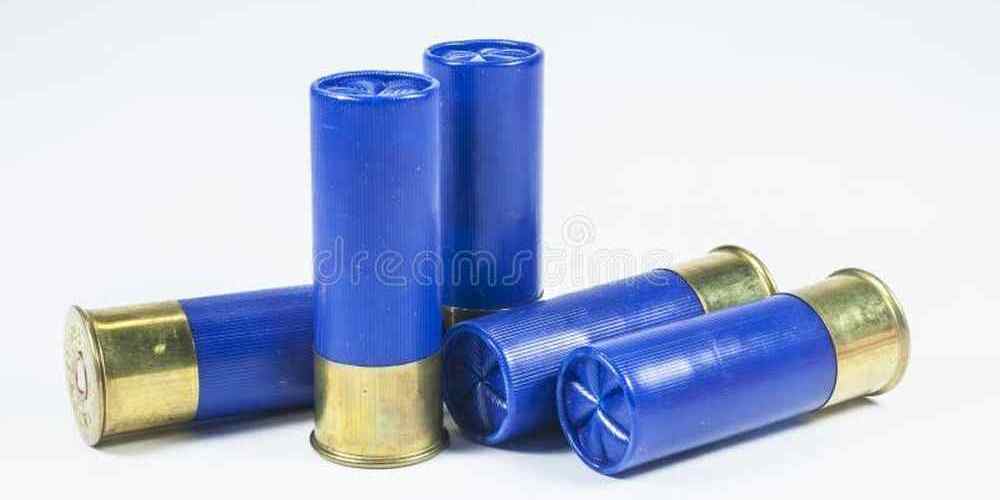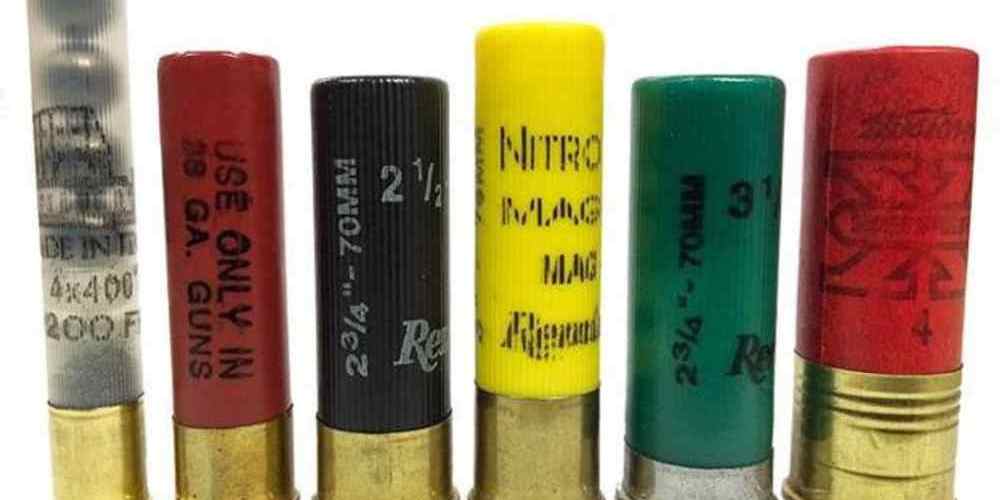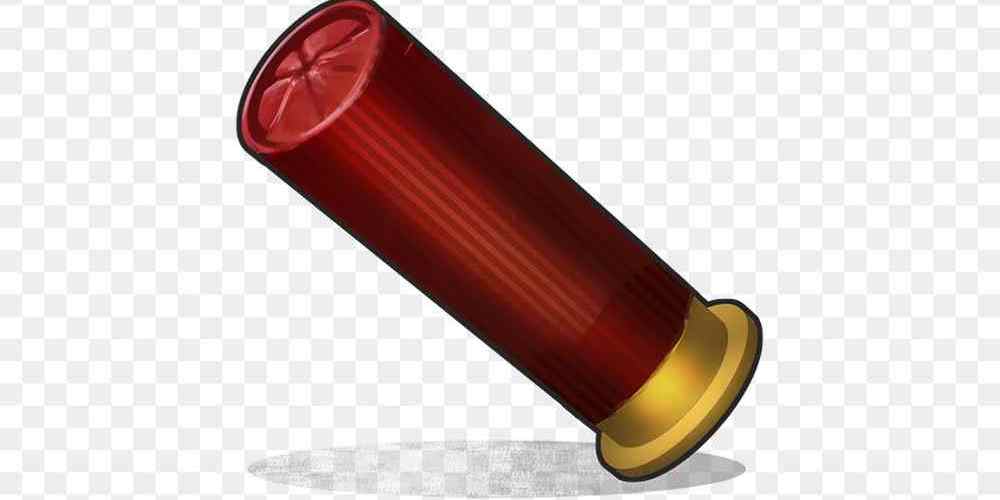“Buffered shotgun ammunition: maximizing performance while minimizing recoil.”
Increased Accuracy
Buffered shotgun ammunition is a popular choice among hunters and shooting enthusiasts for its ability to increase accuracy and performance. By adding a buffering material to the shotshell, the pellets are held in place during firing, resulting in tighter shot patterns and improved downrange consistency. However, like any product, there are both pros and cons to using buffered shotgun ammunition.
One of the main advantages of buffered shotgun ammunition is its ability to improve accuracy. The buffering material helps to cushion the shot pellets, preventing deformation and keeping them in a more uniform shape as they travel down the barrel. This results in tighter shot patterns and increased downrange consistency, making it easier to hit your target with precision.
In addition to improved accuracy, buffered shotgun ammunition also tends to have better performance at longer ranges. The buffering material helps to keep the shot pellets together as they travel downrange, reducing the spread of the shot pattern and increasing the likelihood of hitting your target at greater distances. This can be especially beneficial for hunters who need to take shots at longer ranges or for shooting sports enthusiasts who compete in events that require precision shooting.
Another advantage of buffered shotgun ammunition is its ability to reduce felt recoil. The buffering material helps to absorb some of the energy generated by firing the shotshell, resulting in a softer recoil impulse that can make shooting more comfortable and enjoyable. This can be particularly beneficial for shooters who are sensitive to recoil or who shoot larger gauge shotguns that produce more felt recoil.
Despite its many advantages, buffered shotgun ammunition does have some drawbacks that shooters should be aware of. One of the main disadvantages is the cost. Buffered shotgun ammunition tends to be more expensive than traditional shotshells, which can be a deterrent for shooters on a budget. Additionally, the buffering material can sometimes cause feeding issues in certain shotguns, particularly semi-automatic models. This can result in malfunctions and misfeeds that can be frustrating for shooters.
Another potential downside of buffered shotgun ammunition is that it may not perform as well in certain shooting conditions. For example, in wet or humid environments, the buffering material can absorb moisture and become less effective, leading to decreased accuracy and performance. Additionally, some shooters may find that buffered shotgun ammunition produces more fouling in their shotgun barrels, requiring more frequent cleaning and maintenance.
In conclusion, buffered shotgun ammunition offers many benefits for shooters looking to improve accuracy and performance. From tighter shot patterns to reduced felt recoil, there are plenty of reasons to consider using buffered shotshells for your next shooting outing. However, it’s important to weigh the pros and cons carefully before making a decision. While buffered shotgun ammunition can enhance your shooting experience, it may not be the best choice for every shooter or every shooting situation. Ultimately, the decision to use buffered shotgun ammunition will depend on your individual shooting needs and preferences.
Reduced Recoil
Buffered shotgun ammunition is a popular choice among hunters and shooters looking to reduce recoil while maintaining accuracy and effectiveness. This type of ammunition is designed to minimize the kickback experienced when firing a shotgun, making it more comfortable to shoot for extended periods of time. However, like any product, there are both pros and cons to using buffered shotgun ammunition.

One of the main advantages of buffered shotgun ammunition is its ability to reduce recoil. This can be especially beneficial for shooters who are sensitive to recoil or who are looking to minimize the strain on their shoulder and body. By absorbing some of the energy generated when the shotgun is fired, buffered ammunition can help to make shooting more comfortable and enjoyable.
In addition to reducing recoil, buffered shotgun ammunition can also help to improve accuracy. The buffering material used in these shells helps to keep the shot pellets in place as they travel down the barrel, resulting in a more consistent and predictable shot pattern. This can be particularly useful for hunters who are looking to make precise shots at a distance or for shooters who are participating in competitive shooting events.
Another advantage of buffered shotgun ammunition is its versatility. These shells can be used in a variety of shotgun types and gauges, making them a convenient option for shooters who own multiple firearms. Whether you are shooting a 12-gauge pump-action shotgun or a 20-gauge over/under, buffered ammunition can help to enhance your shooting experience.
Despite its many benefits, there are some drawbacks to using buffered shotgun ammunition. One of the main concerns is the cost. Buffered shells tend to be more expensive than traditional ammunition, which can be a deterrent for some shooters. However, many enthusiasts find that the improved performance and comfort provided by buffered ammunition are well worth the investment.
Another potential downside to using buffered shotgun ammunition is the increased cleaning and maintenance required. The buffering material used in these shells can leave residue in the barrel and action of the shotgun, which may require more frequent cleaning to prevent malfunctions. Additionally, some shooters find that the buffering material can be messy and difficult to remove from their firearms.
In conclusion, buffered shotgun ammunition offers a number of benefits for shooters looking to reduce recoil and improve accuracy. From its ability to minimize kickback to its versatility in different shotgun types, buffered ammunition can be a valuable tool for hunters and shooters alike. However, it is important to weigh the pros and cons of using buffered ammunition before making a decision. While the cost and maintenance requirements may be drawbacks for some shooters, the improved performance and comfort provided by buffered ammunition may make it a worthwhile investment for others. Ultimately, the choice to use buffered shotgun ammunition will depend on your individual shooting preferences and needs.
Limited Range
Buffered shotgun ammunition is a type of shotgun shell that contains a buffering material, such as plastic pellets or fibers, to help improve the performance of the shot. This type of ammunition is designed to reduce recoil, improve pattern density, and increase the effective range of the shotgun. While buffered shotgun ammunition has its advantages, there are also some drawbacks to consider.
One of the main benefits of buffered shotgun ammunition is its ability to reduce recoil. The buffering material helps to absorb some of the energy generated by the shot, which can make shooting more comfortable for the shooter. This can be especially beneficial for those who are sensitive to recoil or who are shooting larger caliber shotguns.
In addition to reducing recoil, buffered shotgun ammunition can also help to improve pattern density. The buffering material helps to keep the shot pellets from deforming as they travel down the barrel, which can result in a tighter, more consistent pattern. This can be particularly useful for hunters who are looking to achieve a clean, ethical kill on their target.
Another advantage of buffered shotgun ammunition is its ability to increase the effective range of the shotgun. By reducing recoil and improving pattern density, buffered shotgun ammunition can help to extend the range at which the shotgun is effective. This can be especially useful for hunters who are shooting at longer distances or who are targeting fast-moving game.
Despite its many advantages, buffered shotgun ammunition does have some drawbacks that should be considered. One of the main drawbacks is its limited range. While buffered shotgun ammunition can help to extend the effective range of the shotgun, it is still limited by the ballistic properties of the shot pellets. This means that buffered shotgun ammunition may not be as effective at longer distances as other types of ammunition.
Another drawback of buffered shotgun ammunition is its cost. Buffered shotgun ammunition tends to be more expensive than traditional shotgun shells, which can be a deterrent for some shooters. Additionally, the buffering material can sometimes cause feeding issues in certain shotguns, which can be frustrating for shooters.
In conclusion, buffered shotgun ammunition has its pros and cons. While it can help to reduce recoil, improve pattern density, and increase the effective range of the shotgun, it is also limited in range and can be more expensive than traditional shotgun shells. Ultimately, the decision to use buffered shotgun ammunition will depend on the individual shooter’s preferences and needs.
Higher Cost
Buffered shotgun ammunition is a popular choice among hunters and shooting enthusiasts for its ability to improve performance and accuracy. However, like any product, there are both pros and cons to consider before making a purchase. In this article, we will explore the advantages and disadvantages of buffered shotgun ammunition, specifically focusing on the higher cost associated with this type of ammunition.
One of the main advantages of buffered shotgun ammunition is its ability to improve shot patterns and reduce recoil. The buffering material, typically made of plastic or fiber, helps to cushion the shot as it travels down the barrel, resulting in tighter shot patterns and increased accuracy. This can be especially beneficial for hunters who are looking to make precise shots at longer distances or in challenging conditions.
Additionally, buffered shotgun ammunition can help to reduce felt recoil, making shooting more comfortable and enjoyable. The buffering material absorbs some of the energy generated by the shot, resulting in less kickback and a smoother shooting experience. This can be particularly helpful for shooters who are sensitive to recoil or who are looking to minimize fatigue during long shooting sessions.
Despite these advantages, one of the main drawbacks of buffered shotgun ammunition is its higher cost compared to traditional ammunition. The buffering material used in these shells can be more expensive to produce, resulting in a higher price tag for consumers. This can be a significant factor for shooters who are on a tight budget or who go through a large volume of ammunition on a regular basis.
Another potential downside to buffered shotgun ammunition is that it may not be compatible with all shotguns. Some older or lower-quality shotguns may not be able to handle the increased pressure generated by buffered shells, leading to potential malfunctions or damage to the firearm. It is important for shooters to carefully read the manufacturer’s recommendations and specifications before using buffered ammunition in their shotgun.
Despite the higher cost and potential compatibility issues, many shooters find that the benefits of buffered shotgun ammunition outweigh the drawbacks. The improved shot patterns and reduced recoil can make a significant difference in performance, especially for those who are looking to take their shooting to the next level. Additionally, the higher cost may be justified for shooters who prioritize accuracy and comfort over price.
In conclusion, buffered shotgun ammunition offers a number of advantages, including improved shot patterns and reduced recoil. However, the higher cost associated with this type of ammunition may be a deterrent for some shooters. It is important for individuals to weigh the pros and cons carefully before making a decision on whether to invest in buffered shotgun ammunition. Ultimately, the choice will depend on individual preferences and priorities when it comes to shooting performance and comfort.
Potential Over-Penetration
Buffered shotgun ammunition is a popular choice among hunters and shooters for its ability to improve performance and accuracy. However, like any ammunition type, there are both pros and cons to consider when using buffered shotgun loads. One potential downside to using buffered shotgun ammunition is the risk of over-penetration.
Over-penetration occurs when a projectile passes through its intended target and continues traveling, potentially causing damage to unintended targets or property. This can be a serious concern for hunters and shooters, as it can lead to safety hazards and legal issues. Buffered shotgun ammunition, which is designed to increase velocity and range, can increase the risk of over-penetration compared to standard loads.
One of the main reasons why buffered shotgun ammunition can lead to over-penetration is its increased velocity. The buffering material used in these loads helps to reduce deformation of the shot pellets, allowing them to maintain their shape and travel at higher speeds. While this can improve accuracy and range, it also means that the pellets are more likely to penetrate through the target and continue traveling.
Another factor that contributes to over-penetration with buffered shotgun ammunition is the type of shot used. Buffered loads are often loaded with larger shot sizes, such as buckshot or slugs, which have more mass and energy than smaller shot sizes. This increased energy can cause the pellets to penetrate deeper into the target and potentially exit on the other side.
To mitigate the risk of over-penetration when using buffered shotgun ammunition, there are a few steps that hunters and shooters can take. One option is to use a choke that is designed to reduce the spread of the shot pattern, which can help to concentrate the pellets on the target and reduce the likelihood of stray pellets causing damage. Additionally, using a lighter shot size or reducing the powder charge can help to decrease the velocity of the pellets and reduce the risk of over-penetration.
Despite the potential for over-penetration, buffered shotgun ammunition also has its advantages. The increased velocity and range provided by buffered loads can improve accuracy and effectiveness, making them a popular choice for hunting and shooting sports. Additionally, the buffering material helps to reduce felt recoil, making it more comfortable to shoot for extended periods of time.
In conclusion, while buffered shotgun ammunition offers many benefits, it is important for hunters and shooters to be aware of the potential for over-penetration. By taking precautions such as using the appropriate choke and shot size, shooters can minimize the risk of stray pellets causing unintended damage. Ultimately, the decision to use buffered shotgun ammunition should be based on a careful consideration of the pros and cons, weighing the benefits of improved performance against the potential risks of over-penetration.




